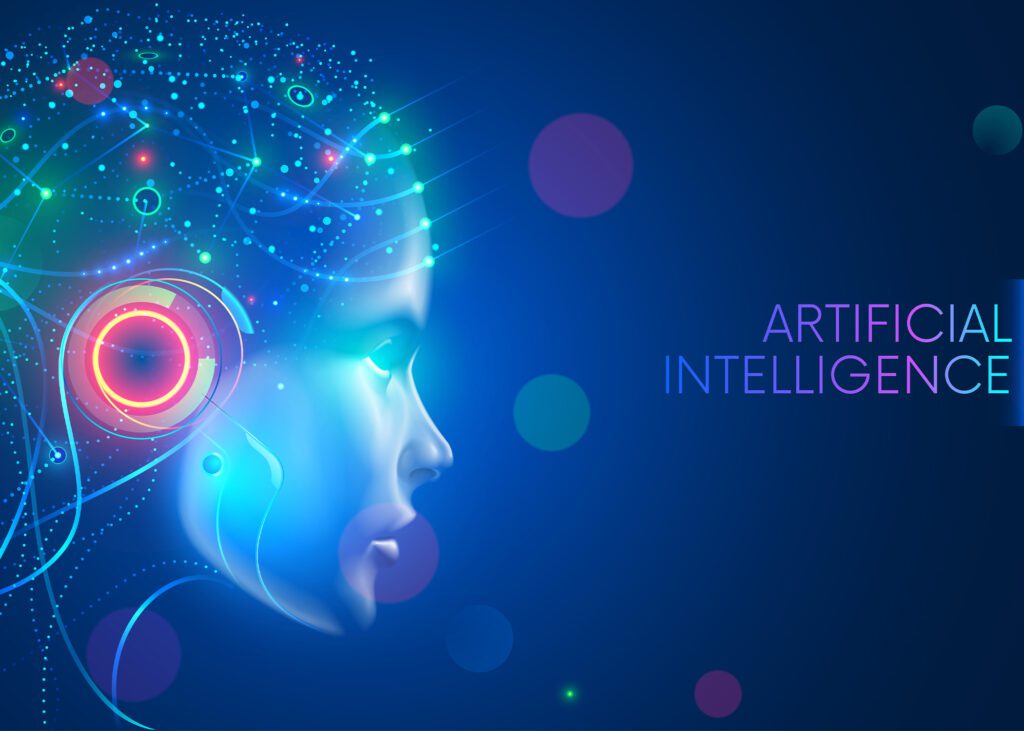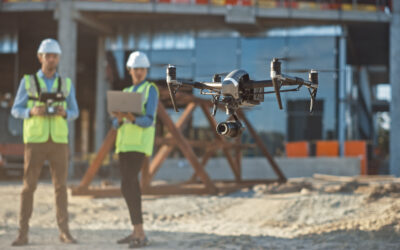 Artificial Intelligence (AI) is revolutionizing the workplace, and as we anticipate the developments of 2024, it’s expected to significantly enhance work environments, especially in health and safety. AI’s role in creating method statements, risk assessments, and document production is pivotal for boosting efficiency. However, artificial intelligence is not a panacea but a tool to help us complete our tasks with greater efficiency. Let’s explore how AI can shape workplace safety and health in the years ahead, fostering a safer and more productive work environment.
Artificial Intelligence (AI) is revolutionizing the workplace, and as we anticipate the developments of 2024, it’s expected to significantly enhance work environments, especially in health and safety. AI’s role in creating method statements, risk assessments, and document production is pivotal for boosting efficiency. However, artificial intelligence is not a panacea but a tool to help us complete our tasks with greater efficiency. Let’s explore how AI can shape workplace safety and health in the years ahead, fostering a safer and more productive work environment.
Artificial intelligence : Enhancing Workplace Safety and Health
When it comes to workplace safety and health, artificial intelligence brings a plethora of benefits to the forefront.
Risk Mitigation
Artificial intelligence can analyze a vast amount of data, identify potential hazards and risks in the workplace, and offer solutions to mitigate them through ai in risk management. This proactive approach not only helps to prevent accidents and injuries but also bolsters overall workplace safety.
Real-time Monitoring
Artificial intelligence can consistently monitor workers’ activities and the overall work environment through video monitoring. It can detect potential safety issues and alert workers and managers in real-time, enabling an immediate response to potential hazards.
Predictive Analytics
Artificial intelligence leverages predictive maintenance and analytics to anticipate potential safety risks. By analyzing historical data, it can identify patterns that may lead to accidents, allowing companies to implement proactive measures.
Increased Efficiency
Artificial intelligence automates various safety inspections and risk assessments with document management, freeing workers to focus on more complex tasks. This not only enhances safety but also increases efficiency in the workplace.
Improved Training
By providing personalized training to employees based on their individual needs, artificial intelligence ensures that all workers are well-prepared to uphold safety standards in the workplace.
Predictive Model for SIF Exposure
Every organization is committed to safety leadership, aiming to prevent Serious Injury and Fatality (SIF) outcomes. By integrating artificial intelligence into their safety strategies, companies can harness the power of predictive analytics to proactively manage SIF conditions.
Data Collection
The initial step in developing a predictive model involves text analysis to collect data on previous SIF incidents. This information is crucial for uncovering patterns, trends, and common causes of such incidents.
Risk Assessment
Conducting risk assessments is a fundamental aspect of ai in risk management, as it helps in pinpointing potential hazards that could result in SIF incidents. AI enhances this process by analyzing the amassed data to spot potential risks.
Identifying Leading Indicators
Proactive safety measures involve recognizing leading indicators, which serve as early warning signs of potential hazards. Identifying these indicators enables organizations to take preemptive actions to avert incidents.
Setting Thresholds
AI’s role extends to setting thresholds for leading indicators that, upon being surpassed, prompt safety protocols such as the implementation of additional controls or the provision of further training to prevent incidents.
Monitoring and Analysis
Through regular monitoring of leading indicators, AI contributes to safety management by detecting trends and shifts. This ongoing surveillance aids organizations in pinpointing potential hazards or risks that demand more attention.
Corrective Actions
When thresholds are exceeded, AI can suggest corrective actions to mitigate risks.
Evaluating Effectiveness
Compliance management includes gauging the success of risk mitigation strategies by keeping an eye on incident rates and conducting thorough data reviews.
Creating Safer Work Environments
AI is a powerful tool to enhance health and safety in the workplace.
Intelligent Chatbots
Artificial intelligence-powered chatbots can capture safety-related data, assisting organisations in enhancing safety standards and reducing workplace accidents.
Natural Language Processing
Leveraging artificial intelligence, AI can identify and categorise safety observations and near-misses data, automating the process and bolstering workplace safety.
Machine Learning
AI algorithms, by analysing vast quantities of data, can detect patterns and anomalies that signify potential safety risks or compliance issues.
Similarity Identification Framework
Artificial intelligence’s similarity identification framework can aid organisations in detecting patterns in health and safety issues, streamlining the efficiency of issue classification, reporting, and risk management.
Predictive Analytical Models
Artificial intelligence enables the use of predictive maintenance analytical models to assist safety leaders in prioritising safety issues based on their risk level, thereby diminishing the likelihood of workplace accidents and injuries.
Looking ahead to 2024, artificial intelligence is poised to play a pivotal role in advancing occupational health and enhancing workplace safety. By tapping into AI’s capabilities, we can foster safer work environments, elevate efficiency, and ultimately, enhance the quality of our work lives.
UK Based Websites for AI in Health and Safety External Links
- Health and Safety Executive (HSE) – AI and Workplace Safety
- Website: https://www.hse.gov.uk
- Overview: As the UK’s national regulator for workplace health and safety, HSE’s website is a prime source for guidance on integrating AI into health and safety practices. They may offer research, reports, and case studies on AI’s role in risk assessments, monitoring, and safety management.
- The Chartered Institute of Ergonomics & Human Factors (CIEHF) – AI in Ergonomics
- Website: https://www.ergonomics.org.uk
- Overview: CIEHF often discusses the interplay between AI, ergonomics, and human factors engineering, crucial for designing safer workplaces. Their resources can offer insights into using AI to improve workplace design and training for health and safety.
- British Standards Institution (BSI) – Standards for AI in Health and Safety
- Website: https://www.bsigroup.com
- Overview: BSI develops standards for the application of AI in various sectors, including workplace health and safety. Their website can provide information on best practices, compliance, and the development of AI technologies in safety management.
- TechUK – AI in the UK Workplace
- Website: https://www.techuk.org
- Overview: TechUK represents the UK technology industry and offers insights into how AI technologies are being deployed across different sectors, including workplace safety. They may have reports, articles, and events focusing on AI innovations and regulations in the UK.
- Safety and Health Practitioner (SHP) – AI in Safety Management
- Website: https://www.shponline.co.uk
- Overview: SHP is a leading publication for the health and safety industry in the UK. It covers the latest news, trends, and best practices in safety management, including the use of AI for risk mitigation, real-time monitoring, and predictive analytics.
- Institute of Occupational Safety and Health (IOSH) – AI and Occupational Safety
- Website: https://www.iosh.com
- Overview: IOSH is a prominent organization for health and safety professionals in the UK. Their website offers resources, training, and research findings on the implications of AI for occupational safety and health.
- Data Science Campus at the Office for National Statistics (ONS) – AI Research and Innovation
- Website: https://datasciencecampus.ons.gov.uk
- Overview: The Data Science Campus at ONS engages in research on how data science and AI can be applied across public sector services, including workplace health and safety. They may provide data-driven insights and innovations relevant to AI applications in safety management.


0 Comments